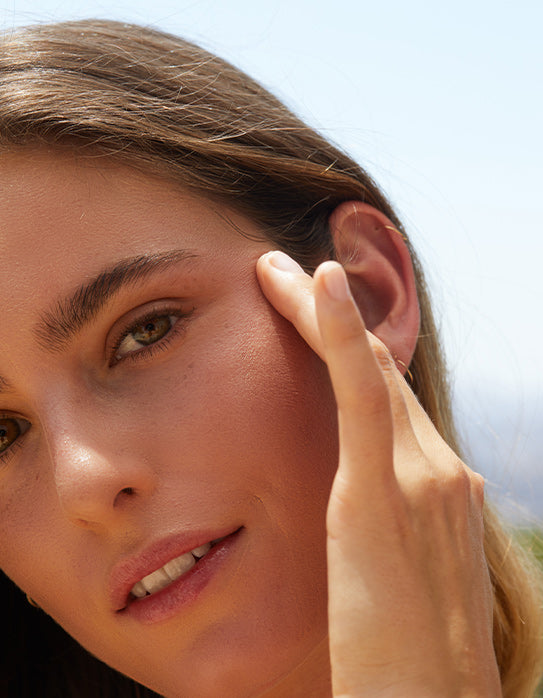Here’s What You Need To Know About UV Protection
Posted by Team LATHER on

There’s no denying the importance of applying sunscreen regularly. It’s the single most important step you can take to prevent visible signs of aging and sun damage. We always remember to put sun protection on when we’re headed out for a day by the pool, but did you know you can overexpose your skin on a cloudy afternoon? Let’s break down sun exposure and how easy it is to fully protect your skin.

UV Rays 101
Have you glanced at a bottle of sunscreen and wondered what “broad spectrum” means? Is it an important quality to look for? The short answer is yes. Broad-spectrum protection implies that the product provides coverage against both UVA and UVB rays. Here’s a closer look at how to distinguish the two ultraviolet rays:
UVA RAYS
UVA Rays have a longer wavelength and do damage over time. This type of ray is associated most with skin aging and long-term sun damage. UVA = aging.
UVB RAYS
UVB rays have a shorter wavelength and typically show signs of damage within hours. This type of ray causes sunburns and immediate sun damage. UVB = burning.
It’s important to note that although these rays create different effects on the skin, they both contribute to cellular damage and your risk of skin cancer.

Chemical vs. Mineral Sunscreen
It’s clear that we need to use sunscreen regularly in our routines. But how do we identify the different types of sunscreen on the market?
Chemical sunscreens create a filter to absorb the sun’s rays into your skin. The two most common ingredients in chemical sunscreen formulas are octinoxate and oxybenzone.
Mineral sunscreens create a physical barrier from the sun. They are typically created with one or both of these ingredients: zinc oxide and titanium dioxide. Mineral sunscreens are considered to be safer alternatives for those who have sensitive skin or chemical sunscreen allergies.
When we created our Daily Defense Mineral SPF 50 Sunscreen, we formulated it with clean, skin-loving ingredients like zinc oxide, green tea, and shea butter. Full of antioxidants and fatty acids, our daily sunscreen nourishes skin as it offers broad-spectrum protection and a matte, seamless finish.

Top Application Tips
Now that we have a better understanding of sunscreen formulas, let’s talk application. These are our top tips to protect yourself from the sun and ensure you are applying your sunscreen effectively:
- Use a high-SPF, broad-spectrum sunscreen every day, year-round. Yes, even when it’s cloudy.
- Apply a liberal amount of sunscreen as the last step in your skincare routine. Don’t forget the tops of your ears and use whatever is left on your hair part. These areas burn too!
- Reapply every 80 minutes or more often if you’re sweating or swimming.
- Wear sun-protective clothing like long sleeve shirts, sunglasses, and a wide-brimmed hat when spending time outdoors.
- Avoid outside activities during peak hours when the UV index is at its highest. This is typically between 11:00 am and 3:00 pm.